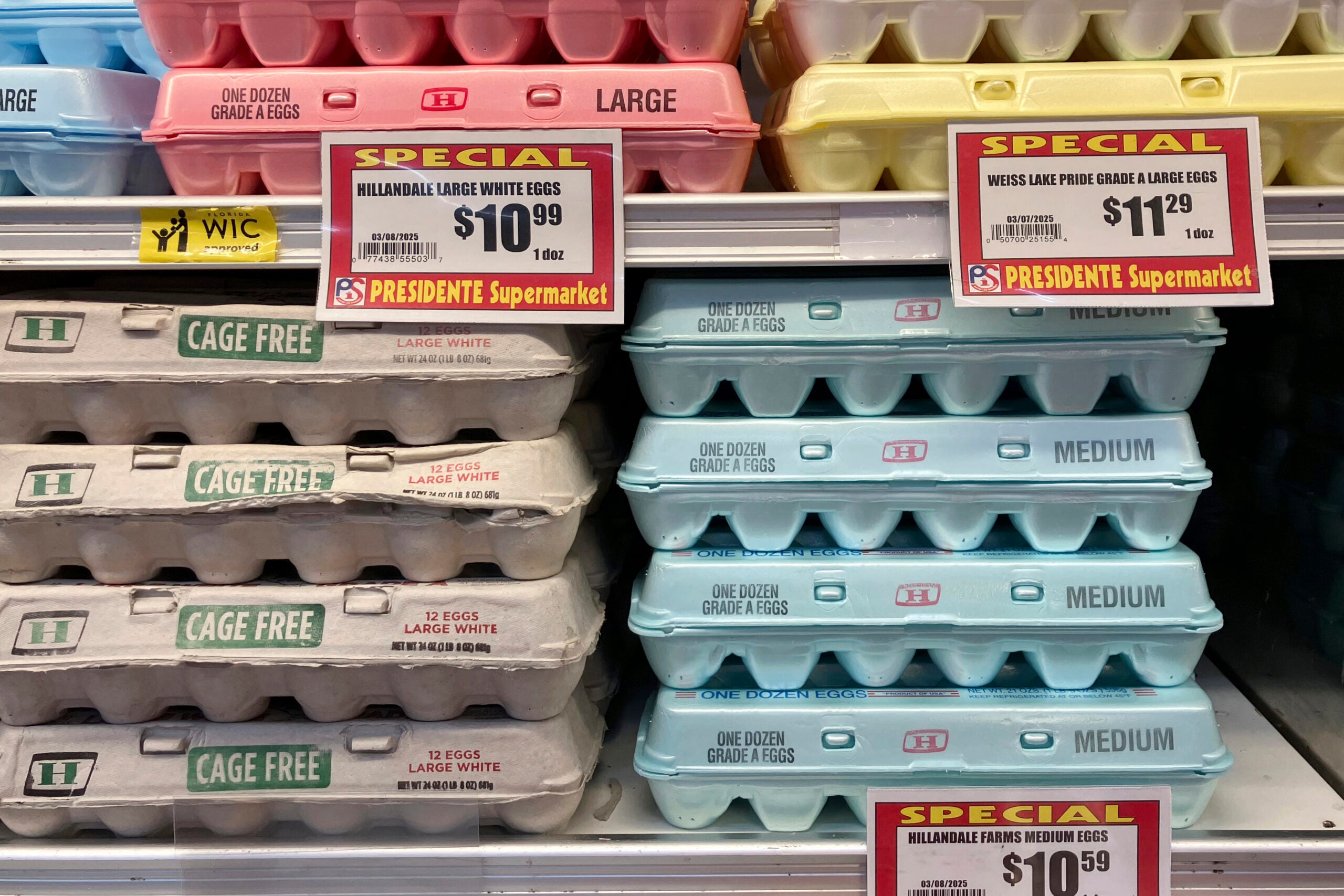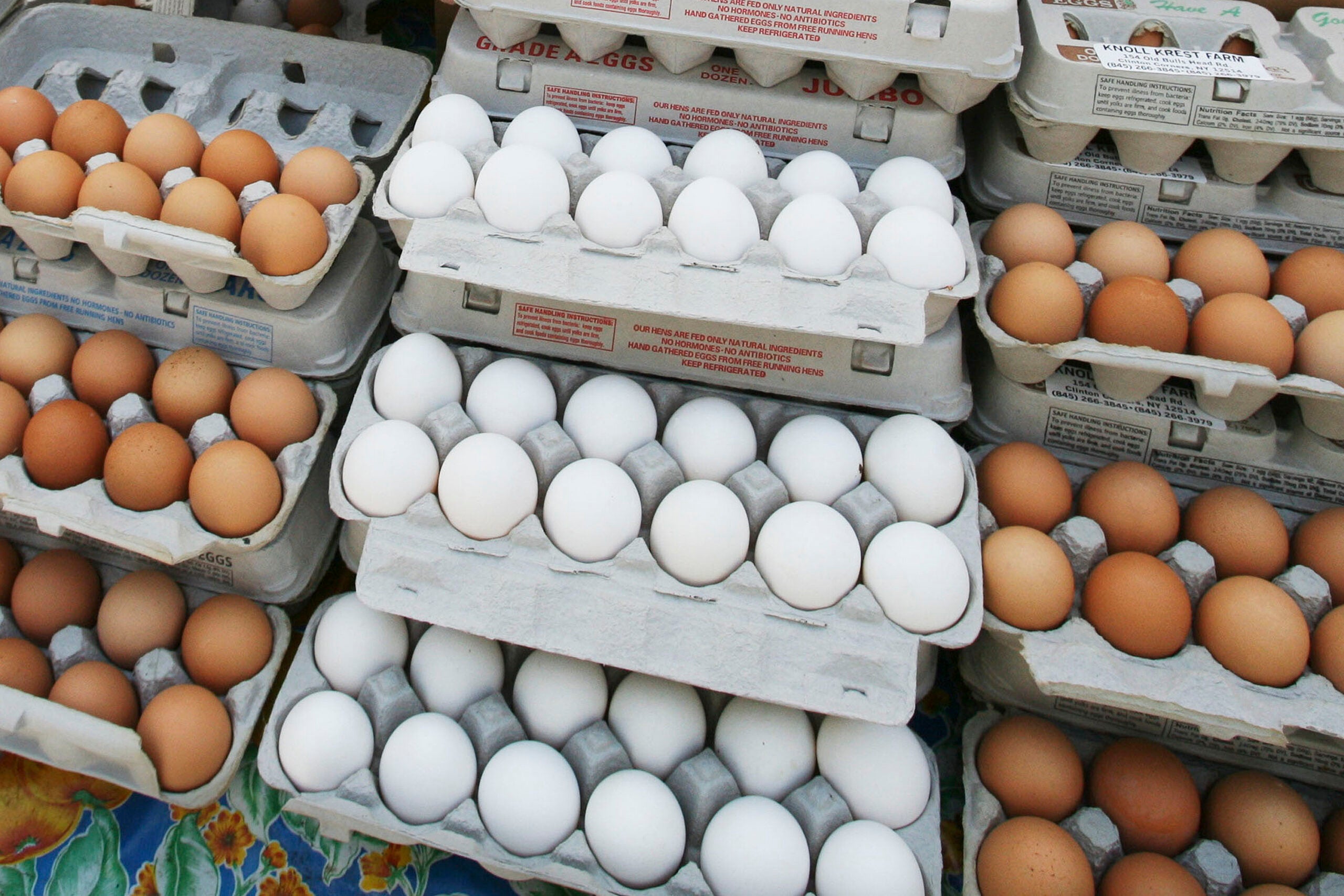At Franks Diner in Kenosha, customers can go through nearly 1,500 eggs in a single weekend.
Those eggs have become precious commodities now that bird flu has caused supply shortages and erratic prices all over the country.
“Now we’re afraid to break the eggs if they’re not going into the pan or on the grill,” said Julie Rittmiller, co-owner of Franks Diner, which started in the 1920s and claims to be the oldest diner car in the country.
Stay informed on the latest news
Sign up for WPR’s email newsletter.
Rittmiller spoke recently on WPR’s “Wisconsin Today” about how volatile egg prices are affecting Wisconsin diners.
Franks recently added a $2 upcharge to all dishes containing eggs to help mitigate the fluctuating prices.
When speaking to “Wisconsin Today” in March, Rittmiller said the diner’s recent order of 180 eggs cost $111.50. In October of last year, that same order cost the restaurant $35.99.
In February, a dozen grade A eggs cost an average of $5.90, according to the St. Louis Fed. That set a record-high price for eggs since at least the 1980s. Since February, egg prices have dropped, with the USDA reporting a dozen eggs down to an average of $3 in late March.
Rittmiller said she expects prices to go back up closer to the Easter holiday, when many families dye white eggs various colors and patterns as part of the festivities. The added holiday demand typically raises the price for egg buyers everywhere, Rittmiller said.
Part of the challenge with eggs is that there really isn’t a solid option for substitutes, Rittmiller said. Some places may opt for egg pre-mix for their omelets, but Rittmiller said you can taste the texture and quality difference. Plus, you can’t order pre-mix eggs sunny-side up.
“We cook in front of customers. That’s part of the uniqueness here. Our cooks are really good at cracking eggs,” she said. “It’s part of the fun.”
Instead of using substitutes, Rittmiller said her restaurant is considering ordering brown eggs, which usually cost more but don’t see the wild fluctuations that white eggs have had lately.
Rittmiller hopes that the prices will continue to fall after the holiday season and the restaurant can drop its egg surcharge.
Being nearly 100 years old, Franks has a novelty and a history it can fall back on to get customers in the door. That might not be the case for newer restaurants trying to build a loyal customer base.
But Rittmiller said any new restaurants out there who might be struggling with the rise in food costs should be honest with their customers.
“Sit down. Talk to people. Make your restaurant as welcoming as it can be, and explain if you have to raise prices,” she said. “Most people do understand. And if you have that connection with customers, they’ll understand, and they’ll support you.”
Egg farm struggles to keep up
Meanwhile, on Prairie Bluff Farm near Mount Horeb, organic egg farmer Steve Albert said he’s considering keeping on last year’s flock a little longer to keep up with the increased demand.
Albert talked to “Wisconsin Today” about how his farm is coping with the high demand for eggs. Eggs are one of the most common forms of protein for Americans. The average American ate just over 280 eggs last year, according to the data site Statista.
Albert’s farm sells to local restaurants and businesses around the Dane County area. Over the last few months, he said more and more people are reaching out to him asking for eggs. So many, in fact, that he can’t keep up with the demand.
His farm typically works with about 1,500 hens and replaces them every year to maintain high productivity. But with demand for his brown eggs on the rise, he also might bring on a new flock along with keeping the old one around.
“Unfortunately, I can’t ask the girls out there to put out two eggs a day instead of one,” he said.
While H5N1 Avian Influenza has been around for years, Albert said the disease is hitting egg farmers hard right now, especially major operations with millions of birds.
Albert’s farm keeps its flock count down below 3,000. He said small farms like his would be the ideal way to mitigate the supply chain bottlenecks of culling a single flock when there’s an outbreak.
“When you have a disease, it can be better if the farms are smaller and more spread out,” he said.



